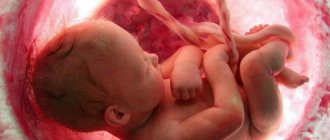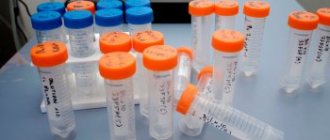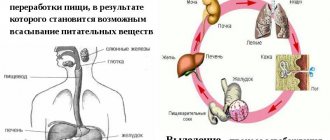Ideally, the 40th week of pregnancy is the natural date for the onset of labor. But during this period, according to statistics, only 4% of women giving birth go into labor. In other cases, children are born either in the previous weeks or a little later. But this fact is often explained by a simple mistake associated with incorrect calculation of the time of birth.
The baby is fully prepared for birth. He no longer has enough space, so the baby’s activity decreases. A baby at the 40th week of pregnancy is normally positioned upside down, and at the same time, on the surface of the abdomen you can easily feel all of its protruding parts of the body. The 40th week of pregnancy is the period when a woman often goes to the maternity hospital in anticipation of giving birth.
Non-dangerous causes of nagging pain at 40 weeks
When nagging pain occurs, it is necessary to identify its cause.
There are physiological reasons why there are no contractions, but the lower abdomen pulls at 40 weeks of pregnancy:
- sprain of the uterine ligaments, enormous stress on joints and bones;
- Braxton-Hicks training contractions - the abdomen hardens, the lower part is strongly pulled, the tone increases, but the condition does not last long, there is no acute pain.
However, real labor contractions can also begin - immediately after the training ones. They can be suspected by increasing pain and decreasing time between contractions.
If a woman gives birth for the first time, the duration of contractions stretches to 14-15 hours. With repeated births, this time is reduced to 4-8 hours. The pain during contractions is similar to short-term spasms that are almost imperceptible. They pass and appear again, and also tend to intensify.
The cervix begins to open. 5-6 hours after the first contractions, their duration increases and the frequency decreases to 5 minutes. Towards the end of contractions and dilation of the cervix, the second stage of labor begins, the pain intensifies many times and labor begins.
The main precursors of childbirth
The harbingers of labor at 40 weeks of pregnancy are hard to miss. Therefore, an attentive woman who monitors her condition can always go to the maternity hospital in a timely manner. In a specialized medical institution, specialists will certainly provide professional assistance even in the most difficult cases.
At the 40th week of pregnancy, the precursors of labor in first-time mothers are always associated with severe pain, which can be observed for a long time. When the lower abdomen hurts at 40 weeks of pregnancy, you must definitely pay attention to other symptoms that should prompt the woman to go to the maternity hospital in a timely manner. The most obvious processes indicating the imminent onset of labor are the following signs:
- Prolapse of the mucus plug due to ripening of the cervix.
- Discharge of amniotic fluid.
- The occurrence of frequent painful contractions.
At 40 weeks of pregnancy, the second birth is often rapid. Therefore, precursors of labor in multiparous women indicate the need for urgent treatment at the maternity hospital.
Against the background of such manifestations, labor often begins in the near future. The danger of a rapid birth is that the baby may be injured during rapid passage through the birth canal.
Pathological causes
In cases of placental abruption, a cesarean section is necessary to prevent an unfavorable outcome.
The most common obstetric causes of pain at 40 weeks of pregnancy include the following pathologies:
- Placental abruption. It can be partial or total. The reason is improper removal of blood from the system, as a result of which it accumulates near the walls of the uterus and placenta, leading to the formation of a hematoma. The larger the hematoma, the greater the degree of detachment. For this pathology, a caesarean section may be prescribed. Symptoms of detachment are uterine bleeding, paroxysmal and dull pain. Combined with tension in the uterus.
- Hypertonicity. This condition is accompanied by strong contractions of the uterus and is very similar to both contractions and placental abruption. But there is no bleeding with tone. Recurrences occur several times an hour or less. Goes away after a short rest.
Risk factors for any complication during pregnancy, including non-obstetric pathologies, are:
- excessive emotional and physical stress;
- intense work;
- abnormal behavior of the hormonal system;
- inflammation of the genital organs;
- age over 35 years;
- chronic heart, liver and kidney diseases;
- frequent abortions and hormonal diseases;
- bad habits.
It is possible to become pregnant and give birth to a child if these factors are present, but with a high probability the course of the pregnancy will be difficult.
Other pathological causes of pain
The influence of pyelonephritis on the unborn child
Other conditions can also provoke discomfort in the lower abdomen, some of which are extremely dangerous:
- Inflammation of the internal genital organs. Most often it is detected at 40 weeks of pregnancy in those women who, before conception, suffered from pathologies of the ovaries or fallopian tubes, including infections. The same disorders develop in women with cysts of the reproductive organs.
- Pyelonephritis and cystitis. These diseases are often accompanied by a violation of the outflow of urine and a change in its character. There may be an increase in temperature and severe pain during urination. With pyelonephritis, sensations often radiate to the lower back. There is also a burning sensation and itching.
- Rupture of an ovarian cyst. A serious condition leading to fainting, acute pain, which can begin with a pulling sensation. This disorder requires medical attention.
- Digestive system problems. While carrying a child, any chronic gastrointestinal diseases can worsen to such an extent that surgical intervention is required. However, nagging discomfort in the lower abdomen is the most common sign of disorders in the large intestine. Hemorrhoids can also radiate to this area - a common disorder in pregnant women, accompanied by pain in the rectum and bloody discharge from the anus.
Acute surgical pathologies - peritonitis and appendicitis occur rarely during pregnancy. But fetal growth can provoke them at any time. The pain becomes so severe that there is no strength to endure it. Possible fever, nausea and vomiting.
If a woman treats her pregnancy responsibly, planned it and underwent all examinations before conception, she should not worry about serious pathologies. In most cases, pain is associated with the natural state of the body.
Features of fetal development
At this time, the mother’s body continues to prepare for childbirth. The pelvic bones move apart a little every day to allow the baby to leave the uterus. Because of this, women increasingly suffer from aching pain in the perineum. The stomach, which has reached its maximum size, puts a lot of pressure on the lower part of the body. The lower back and legs suffer, on which severe swelling appears.
The harbingers of an imminent birth become stronger every day: contractions become more intense, the tummy becomes stone more and more often, which means that the uterus is almost ready to expel the fetus. Colostrum is released from the breast - a nutritious fluid that will be needed to feed the baby in the first days of life. It becomes more and more difficult to move, the pregnant woman is haunted by a feeling of extreme fatigue, weakness and drowsiness. In recent days, the baby in the uterus puts so much pressure on the bladder that the woman constantly runs to the toilet.
Stay up to date with all the changes every week of pregnancy
Receive letters about the baby's development and the mother's condition once a week.
Note that the expectant mother should monitor the movements of the fetus. At 42 weeks of pregnancy, his motor activity, compared to the earlier period, is reduced, and his actions are no longer so sharp.
However, it is necessary that the woman feels at least 10 movements in 12 hours.
The fetus at 40 weeks of gestation occupies almost all the free space in the uterus. It becomes very cramped for him, so he shows less activity. In this case, single tremors become very sharp and after them the lower abdomen may hurt or ache for a long time.
The 40th week of pregnancy is characterized by the fact that the baby gains weight of 3.2-3.8 kg. His height is 50 - 54 cm. All the baby’s organs are fully formed and fully functioning, namely:
- The endocrine system produces all the necessary hormones required for further growth.
- The immune system produces antibodies that will allow you to protect yourself from infections in the first moments of life.
- The heart actively pumps blood, ensuring the supply of oxygen through the vessels of the circulatory system to all organs and tissues.
- The alveolar apparatus of the lungs has finally formed, so the child is ready to take his first breath on his own.
- The digestive system is working, as a result of which original feces have already formed. The child must get rid of it immediately after birth. While the intestines are sterile, beneficial microorganisms will enter it immediately after the first feeding.
Warning signs
Nagging pain in the lower abdomen with lower back pain require immediate medical attention
It is necessary to call an ambulance immediately if, at 40 weeks of pregnancy, nagging pain in the lower abdomen, as during menstruation, is combined with the following symptoms:
- gradual increase in pain;
- sharp, cramping pain;
- the stomach hurts constantly for several days, the symptoms do not go away when changing positions;
- No-spa and other antispasmodics do not help;
- pain radiates to the lumbar region, bladder or rectum;
- Fainting occurs, blood pressure drops and pulse quickens.
All these symptoms indicate the onset of pathological processes that require the participation of doctors.
Well-being
Pregnancy 40 weeks is the final stage of gestation. During this period, a woman has a very difficult time. Her stomach periodically becomes hard, her lower back tightens, and she may feel pain in the perineal area. All this is caused by the fact that the load on the body is maximum; a huge pregnant belly not only interferes with movement, but also creates other inconveniences:
- increases the load on the spine, which is why women often have lower back pain during this period;
- increases the load on the urinary system, the kidneys are working at their limit, and the bladder is now strongly compressed by the large uterus;
- legs often swell;
- sleep is often disturbed, but this symptom is not associated with physical ailment, but with psychological discomfort, since the pregnant woman is increasingly overcome by anxious thoughts about how the birth will proceed;
- in the fortieth week, existing chronic diseases often worsen, and hemorrhoids may appear.
Diagnosis of nagging pain at 40 weeks
Nagging pain at 40 weeks, as during menstruation, should prompt a woman to go to the doctor. Typically, to clarify the diagnosis, the following is prescribed:
- Analyzes. Be sure to study the composition of urine to determine the condition of the kidneys. After all, this organ experiences enormous stress during pregnancy, and pyelonephritis often develops. A blood test for hemoglobin is also prescribed to determine inflammation. A vaginal smear test may be required.
- Instrumental diagnostics. The most common method is ultrasound. With its help, you can monitor the condition of the fetus and placenta every day. Doppler ultrasound is also used to study in detail the blood flow in the umbilical cord and placenta.
Based on these tests, the doctor makes a conclusion about the woman’s condition. The diagnostic procedure necessarily includes a gynecological examination and examination of the condition of the abdomen. An obstetrician-gynecologist deals with this at the initial stages.
At 40 weeks of pregnancy, complex diagnostic methods are not used, as well as dangerous methods: X-rays, MRI, CT, invasive procedures. In most cases, if doctors fail to make a diagnosis, they resort to induction of labor.
Treatment methods
Medicines must be taken strictly as prescribed by the doctor.
Therapy is prescribed only in cases where the woman is not sent to the maternity hospital to induce labor. Foci of infection and inflammation, for example, pyelonephritis or cystitis, are subject to treatment. The following groups of drugs are used for therapy:
- antibiotics;
- antipyretics;
- antispasmodics.
Among antispasmodics, the preferred options are drugs based on drotaverine, as well as papaverine. Drink them 2-3 times a day, 1-2 tablets.
Among antipyretics, preference is given to paracetamol, which is taken on the recommendation of a doctor. Among the antibiotics, amoxicillin is most often used. It has the fewest contraindications and side effects.
It is possible to use a bactericidal cephalosporin, a substance that destroys the walls of bacteria. This group also includes drugs ceftobiprole, ceftolozane, cefotaxime.
At 40 weeks of pregnancy, a woman should not refuse to take vitamins. Usually these are multivitamin complexes that contain A, C, D and other essential microelements. But you cannot completely replace natural vitamins with synthetic ones, so your diet should contain a sufficient amount of healthy foods.
Natural medicines
Folk remedies are popular for treating pain during pregnancy, but each prescription should be discussed with your doctor. All products are taken orally, never douching.
- 10 g of corn silk per glass of boiling water, bring to a boil, cool and drink several times a day.
- 2 tsp. pour half a glass of boiling water, leave for 1-2 hours and drink through a straw before eating.
- Chamomile and mint tea are relaxing remedies, but should not be abused.
- Chamomile infusion prepared from 1 tbsp will help with intestinal discomfort. l. pharmaceutical herb per glass of boiling water.
It is forbidden to drink products based on juniper, horsetail, strawberries, parsley, bear ears and birch buds to relieve pain.
Pain therapy during the 40th week of pregnancy should be carried out under the strict supervision of doctors. Any medications are specified and dosages are regulated, since childbirth is already very close.
Prevention methods
There are no specific ways to prevent painful sensations, other than a correct lifestyle:
- in the 1st and 2nd trimesters you need to maintain acceptable physical activity;
- it is important to undergo routine examinations, take vitamins and medications prescribed by your doctor;
- eat right, excluding junk food;
- quit smoking and alcohol.
At 40 weeks of pregnancy, labor may begin, and pain is one of the signs that it is approaching. If the pain is complicated by other unpleasant symptoms and becomes too severe, it’s time to go to an ambulance or go to the maternity hospital to rule out pathological and dangerous conditions.











